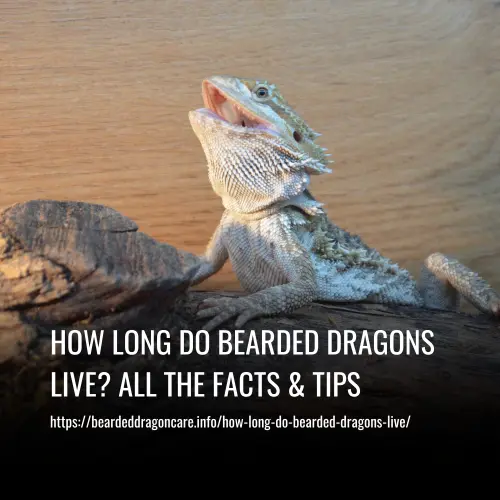The photoperiod is the time a Bearded dragon is exposed to light (vs. darkness) – over a period of 24 hours. When placed in an artificial environment, the photoperiod is an important factor to consider when trying to create a natural experience for Bearded dragons.
The photoperiod is the period of time each day during which an organism receives illumination. In other words, it is the day length. The photoperiod is mainly determined by the sun. For Bearded dragons, the photoperiod affects the day-night-rhythm which has an effect on their growth and is (over time) used to determine the four seasons of the year. Bearded dragons are diurnal animals, meaning they are mainly active during the day. At night they fall asleep, consume no food and their metabolisms drop. Having, for example, longer days allow for more feeding and subsequent growth. This is why baby Bearded dragons that hatch in summer, with longer days, have a greater chance of survival. As the days get shorter and the nights get longer, Bearded dragons are able to determine that winter is approaching and that it is not ideal to breed anymore.
What is Photoperiod?
When it comes to bearded dragons, photoperiod is an incredibly important factor in their overall health. Photoperiod basically refers to the amount of light received by a bearded dragon each day, commonly known as the length of a day.
This photoperiod should accurately reflect the natural light pattern they would experience in their natural environment; 12 hours of daylight and 12 hours of night.
This photoperiod is essential for many activities that a bearded dragon performs such as basking, eating, and breeding. Too much or too little light can have a serious impact on these activities, so it’s important to make sure you are providing your pet with the appropriate level of light.
Having the correct photoperiod will ensure that your pet has all of the energy and activity it needs to stay healthy!
Natural photoperiod for Bearded dragons
When looking at the day-night rhythms in the Australian deserts one will see a clear difference between the daylight length in summer and the daylight length in winter. During the summer, the period between sunrise and sunset will about 14 hours. This gives about 10 hours of night time. In winter the sun will shine for about 12 hours per day. During autumn and spring the daylight length will gradually change towards or away from 14 hours per day. Also see Bearded dragons in the wild for more information.
Bearded dragon basking in the sun.
The pineal gland of Bearded dragons
Most vertebrates, including Bearded dragons, have what is called a pineal gland (also referred to as a ‘third eye‘ or ‘pineal eye‘). It is a small pea-shaped gland situated in the brain which is sensitive to environmental light. The pineal gland of Bearded dragons should not be confused with the Jacobson’s organ (which is an organ used to ‘smell’). Although some of the pineal gland’s functions are still unknown, it is known that it secretes melatonin (a hormone) when lizards are exposed to light (e.g. daylight). Being dependant on the seasonal changes (in other words the photoperiod), the pineal gland of most lizards are well developed.
Longer days (14 hours per day) will lead to more melatonin secretion and vice versa. In other words, when the concentration of melatonin is relatively low (i.e. when the day-length is relatively short when compared with the night-length – about 12 hours per day) a Bearded dragon’s brain can determine that it is winter. Bearded dragons can also determine whether it is spring or autumn through regular changes of melatonin. When there is a sudden change in the concentration from low to high (i.e. during spring) these hormones, among other things, stimulate breeding behaviour.
The Importance of Photoperiod for Bearded Dragons
The photoperiod is extremely important when it comes to keeping your Bearded dragon healthy and happy. For these reptiles, their day-night rhythm is determined by the specific length of light they are exposed to a day. It also affects their growth and over time helps them differentiate between the four seasons of the year.
Having a regular photoperiod is essential for this reptile since its natural habitat involves periods of light and darkness that serves as an indicator on how active they should be during a particular time in the day. Since Bearded dragons are diurnal animals, meaning they are most active in the daytime, having enough light is paramount for their health.
By controlling the amount of daylight exposure you give your bearded dragon through its photoperiod, you can help ensure that it gets enough rest to stay healthy and well-adjusted.
How photoperiod affects Bearded Dragons
For Bearded Dragons, photoperiod plays an important role in their lives. Photoperiod is the time of day when heat, UVA, UVB, and visible light all come from one source- specifically the sun. Reptiles like Bearded Dragons physically respond to fluctuations in sunlight and use it to regulate their hormones and as a calendar for mating, sleeping, and other bodily processes.
Failing to adjust the photoperiod accordingly can result in reproductive failures or other diseases due to changes in hormone levels. Mader’s Reptile Medicine & Surgery (2006) recommends decreasing day length and temperature in the winter for reptiles. Furthermore, inappropriate photoperiod is even linked with obesity!
How to determine bearded dragon’s ideal photoperiod
Finding the ideal photoperiod for your bearded dragon can be a bit tricky and time-consuming, but it’s important to get it right. The key is to research the location where your pet was originally from and use that data as your guide to setting up a plausible day/night cycle in their enclosure.
First, you have to find out the city where your reptile is from, then look up the current local sunrise and sunset times on TimeandDate.com or similar websites.
If you live in the northern hemisphere but your reptile comes from the southern hemisphere, you’ll need to find out what date would correspond to the season they’re used to in their environment.
That means if it’s November 27th in our part of the world, then you’d need June 27th in countries south of us. This is because reptiles rely on barometric pressure which alters with every changing season.
It’s best not to update this information every day, but once a week or twice a month should be enough change for them to benefit from it. Finally, make sure all heat and light sources are turned on at the same exact time – mirroring how nature does it – and you can rest easy that you’re doing your best for their wellbeing!
Digital timers
Digital timers are a great way to help keep your reptile’s environment safe and healthy. They can be used to turn lights on or off at a specified time, ensuring your reptile gets the photoperiod they need. When considering digital timers, you have the option of selecting between the conventional GE 7-Day Programmable Power Strip and the advanced Kasa Smart Plug which can be operated via your phone from afar.
The Fluval Plant Spectrum Bluetooth LED light comes complete with a timer. This integrated timer gives you total control over 24-hour light cycles and customizable color spectrums throughout the day. Unfortunately, it won’t auto-regulate itself based on a given location just yet!
We’re still waiting for technology that will adapt lights according to a given set of coordinates, but in the mean time digital timers can help ensure your reptiles get the optimal photoperiod and colour spectrum they need each day.
Controlling the photoperiod for pet Bearded dragons
When keeping Bearded dragons as pets, the photoperiod of the enclosure should be considered. To create a photoperiod that resembles the day-night cycles in the Australian deserts, lighting equipment (heating and UV lighting) can be used. By changing the on-off light cycles in combination with a seasonal roster a more natural photoperiod can be created. This process can either be done manually or by using a programmable electric timer.
As mentioned previously, lighting should be on for 14 hours per day during the three main months of summer. During the three winter months, the lights should be on for 12 hours and off for 12 hours. During the three months of spring, the light period should be gradually increased from 12 to 14 hours per day and from 14 to 12 hours per day during autumn.
Conclusion
In conclusion, the photoperiod for your Bearded Dragon is an extremely important aspect of their care. Setting up the correct day and night cycles can greatly affect the health and well-being of your Bearded Dragon, as well as its growth. With a few changes to their schedule, you can have a happy and healthy bearded dragon in no time!

